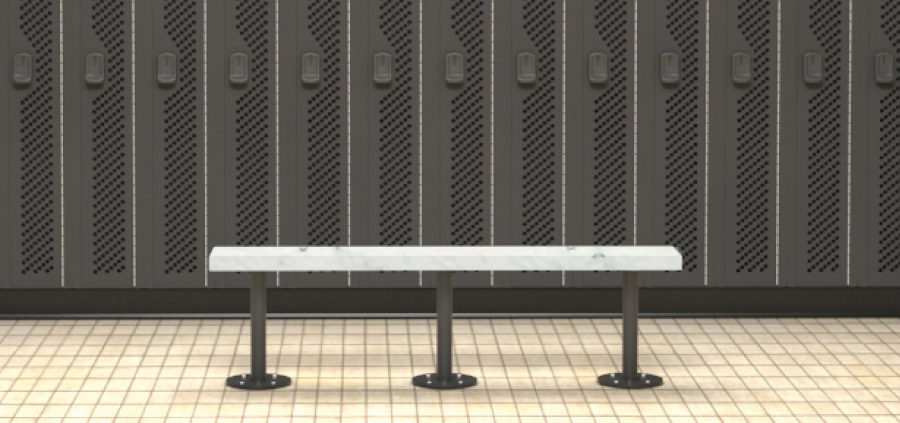Locker Room Design Tips: How to Choose the Right Locker Material
When you select new lockers for your school hallway or gym locker room, you need to choose durable and long-lasting materials that will withstand the daily wear and tear of the facility’s environment. But with so many different options to choose from, how can you be sure that you’ll choose the right one for your school or facility?
To help you learn more about the advantages and disadvantages of the various locker material choices available to you, we’re here to give you some locker room design tips. Read on to learn how to choose the right locker material for your needs.
Wood Lockers
Lockers made out of wood are used in a number of higher end settings. They share many of the same durability issues as painted metal but don’t perform as well since wood is typically more susceptible to damage from direct impacts than metal. If laminated plywood is used, that material may experience delamination if water or other liquids are able to seep between the layers.
The biggest issue with wood as a locker material is the fact that it is porous, meaning it will absorb odors as well. The odors can compound and create an unwelcome situation not only within a locker, but within a room or corridor where they are located. The porosity of the wood speaks of its organic nature and its ability to contribute as a food source for the growth of mold. Wood lockers will similarly require repainting or refinishing over time for a variety of reasons related to use, fading, and wear and tear.
Metal Lockers
Metal lockers are frequently found in school hallways and gym locker rooms because of their low cost and the view that they’re the standard product in the industry
Lockers made out of painted metal have been a common and long standing choice among many school districts and architects. They are typically viewed as a low cost option and a standardized product. However the cost benefit is limited to the initial purchase cost of the lockers only. Over time, they have been shown to require significant maintenance and attention which translates to more costs for several reasons.
While metal is seen to be fairly durable it certainly bends and is susceptible to dents and other damages. When the paint is compromised, then the metal is unprotected and that can lead to further damage such as corrosion or rust. This creates issues of both security and appearance if the damage occurs on the outside of the locker. It can also be a significant issue on the inside of the locker, particularly if wet items are placed on the bottom, scraping paint off and causing rust. That rust could eventually require the bottom or the whole locker unit to be replaced. In addition to the durability limitations of painted metal lockers, there are issues with keeping them clean and attractive. Painted metal has very low resistance to graffiti, scuffs and stains. Removal of any of these is typically not an easy task and may require the use of solvents that can damage the painted surfaces. In certain cases, removal may not be readily possible and the only option is to repaint.
Phenolic Lockers
Phenolic is a hard, dense material made by applying heat and pressure to layers of paper impregnated with synthetic resin. Phenolic lockers are the most commonly thought of as durable lockers but are extremely heavy. Phenolic lockers are also not color throughout and most known for their black core exposed edges.
Phenolic material is not recyclable and not made in the US due to its harsh chemicals.
HDPE Plastic Lockers
HDPE plastic lockers are inherently moisture impermeable and non-porous, therefore lockers made of this material will never rust, corrode, or delaminate. For this reason, they are require little maintenance and have a low cost of ownership. From the standpoint of general durability, an impact test conducted following ASTM standards showed that HDPE plastic lockers had 59 times greater resistance to impacts when compared to metal lockers.
The nature of this material is to absorb and disperse any impact, meaning that dents are not likely and it is more resistant to abuse. Further, since the material is manufactured with solid coloring throughout, it makes scratches difficult to see, helping to retain its appearance under normal wear and tear conditions.
From a general maintenance standpoint, the qualities of HDPE that make it impermeable and nonporous mean that dirt, marker, paint and other items don’t stick to it. Worry-free maintenance is a real possibility when HDPE lockers are installed.
Even though there are many material options to choose from for lockers, it is important to understand the characteristics and what material will best fit your facility’s needs.
Scranton Products’ Duralife and Tufftec lockers are made with HDPE plastic material and have a wide range of design options. Learn where you can find HDPE plastic lockers near you.





